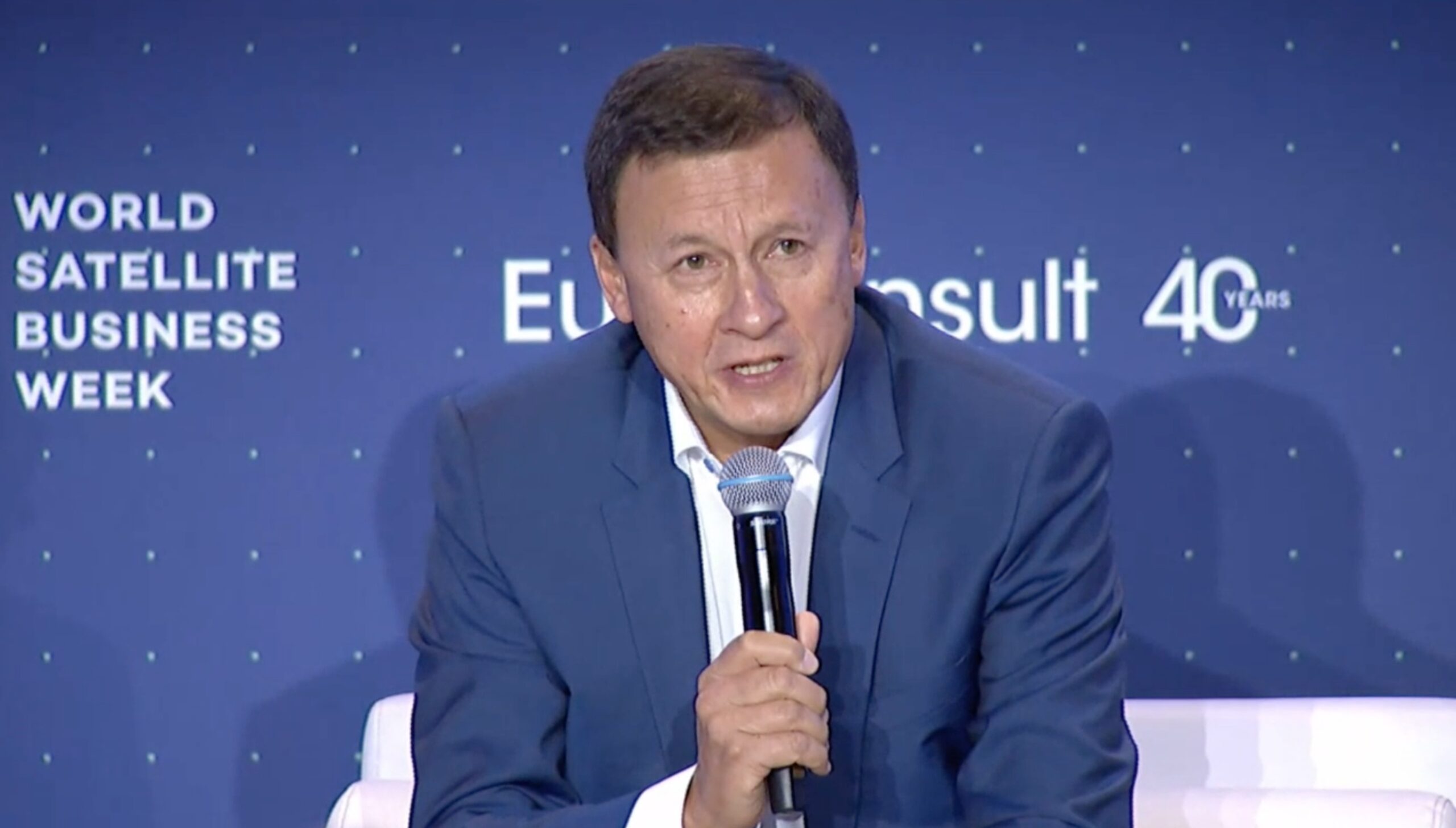TAMPA, Fla. — The growing need to tackle climate change presents a transformational growth opportunity for the Earth observation industry, executives from an international mix of companies in this market said Sept. 15.
Mo Lin, vice president of Chinese spacecraft maker DFH Satellite — part of China Aerospace Science and Technology Corp. (CASC), said his company has helped deploy hundreds of Earth observation satellites, mainly focused on optical and synthetic aperture radar (SAR) imagery.
However, “climate change will be one of the key [focuses] of Chinese aerospace” for future Earth observation satellites, calling for more instruments designed to detect and monitor carbon dioxide and other greenhouse gases.
“The next frontier is climate action,” agreed Philippe Pham, senior vice president and head of Earth observation and science programs at Europe’s Airbus.
Companies that include Canada-based GHGSat, France’s Absolut Group, and Satlantis of Spain are also actively pursuing this market with dedicated constellations.
According to Pham, effectively addressing climate change requires more data diversity, lower costs, and faster production schedules.
He said the market also needs more institutional and commercial momentum to drive improvements in space-based instruments, to improve the accuracy of data and the speed it can be delivered to help track whether solutions are working.
“But this goes with regulations [and] with compliance needs,” he added, “and then this will trigger the market — but here we are not yet there, and the momentum needs to accelerate beyond the current set of payload capacities.”
Massimo Comparini, senior executive vice president of observation, exploration, and navigation at Airbus’ European rival Thales Alenia Space, said partnerships would be needed across the space industry to miniaturize these sensors and unlock their potential.
If the industry can inject this kind of innovation, he said the market could ramp up over the next five to seven years to realize the kind of exponential growth that Earth observation operators have been promising to deliver for years.
Žilvinas Kvedaravičius, chief sales officer at Lithuanian small satellite maker NanoAvionics, said he does not expect this next frontier for Earth observation market to be so far away.
NanoAvionics is working with “quite a few younger companies” in this area, he said, and “the next couple of years will be a breaking point when we see the new sensors — infrared, thermal imaging, coming up.”
Absolut Group ordered a demo cubesat from NanoAvionics in December for a launch in early 2024 called Gen1, which would use sensors at very low temperatures to detect greenhouse gas leaks.
SpaceX is changing satellite size needs
The colossal Starship rocket SpaceX is developing, and the company’s plans to significantly ramp up cadence in general with 144 launches targeted for 2024, could also reduce cost constraints for building larger satellites.
“[T]he compromise between size, volume, mass, price, cost, access to space, still may evolve quite significantly,” Pham said.
Bryan Dean, CEO and co-founder of Dragonfly Aerospace, said the South African satellite maker is working on a half-meter system that it will continue to push upwards, “and as launch gets easier, and cheaper, and bigger, it becomes less and less of a constraint.”
Satellites were roughly matched to launch price in the past, Dean said, but now satellites are a lot more expensive than launches.
A further decline in launch prices could mean manufacturers would not have to push so hard to cram high-performing capabilities into small form factors.
“Right now we operate at the limit of what is achievable at all times,” he continued, “especially on the high-resolution systems — it’s the best resolution that you can get out of an aperture.
“If you were not pushing quite so hard, it’d be easier [and] cheaper to build these systems. You could look at larger mirrors that are … doing higher resolutions, and ultimately then more satellites.”
While he said Dragonfly Aerospace remains focused on making the smallest package for the best performance, he said the general trend is pushing manufacturers toward larger satellites.
